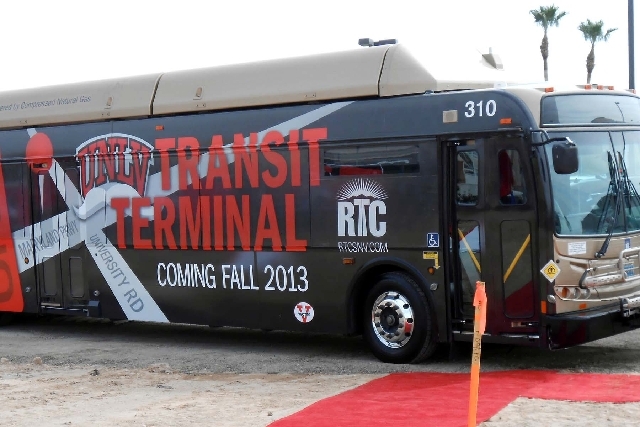Officials say remaking Maryland Parkway remains top transportation priority

Maryland Parkway is one of those streets few people but the 9,000 drivers who use it everyday think about.
But it also may be the most important north-south street in the valley, after the obvious exception of Las Vegas Boulevard.
Maryland essentially runs from McCarran International Airport to downtown Las Vegas, skirting UNLV, the Boulevard Mall, and Sunrise Hospital and Medical Center on the way.
It’s not only the busiest north-south route in town (The Strip excepted, of course), but it’s consistently in the top three or four busiest streets, regardless of direction. The Strip is always the busiest, followed by Flamingo Road.
Charleston Boulevard and Maryland flip-flop between third and fourth, according to data from the Regional Transportation Commission.
Transportation leaders say Maryland is an essential route through town. That’s why remaking the parkway is among the top transportation priorities in the valley right now.
“It’ll be proof that we are growing into something more than what we were,” said Tina Quigley, the RTC’s general manager.
The RTC is the main source of local funding for major transportation projects. But with the economy slowed and fuel tax revenue down, money has been tight in recent years.
State lawmakers this year gave the Clark County Commission the authority to raise the local gas tax to fund transportation projects. Commissioners have yet to vote on the measure, but Quigley has been pushing hard for it.
She said it would bring in an estimated $26 million a year for road projects. But the more important part is it would allow the RTC to immediately issue between $700 million and $800 million in bonds. Essentially, the new 3-cent-per-gallon tax would allow the RTC to borrow three quarters of a billion dollars.
Quigley said funding road projects is not just about making commuting to work easier for locals. It’s also about the region’s economic vitality.
“There’s no secret to how you grow a region’s economic development,” she said. “Businesses will locate and grow in communities where they’ve got a steady, educated workforce and where their goods and services can get where they need them to be.”
Maryland Parkway fits into that, she said.
The top projects, should the RTC get the money it desires, would be:
■ Finishing the Las Vegas Beltway to make a true freeway;
■ Getting started on Interstate 11, which would link Las Vegas and Phoenix and include a bypass through Boulder City;
■ Funding Project Neon, the major reworking of Interstate 15 through the center of town;
■ Improving flow through the Convention Center area;
■ Improving Maryland Parkway from the airport to downtown.
The Maryland project could cost from $60 million to $100 million, depending on specifics. Quigley said the agency will pursue federal funding, which could cut project costs in half.
It might include going from six lanes to four. It might include moving the bus routes to the center of the road. It might even include a light rail system, maybe even streetcars with frequent stops.
The planning and design could take up to two years, with construction taking two to three years more. The RTC is holding public meetings to find out what people are most interested in.
Bike and pedestrian access are a given. Not only because of the 28,000 students and thousands of employees at UNLV, but because much of Maryland is populated by apartment dwellers who are more likely to walk or take the bus.
For a while, officials even contemplated a subway or a monorail, though either is highly unlikely.
What seems likelier are dedicated bus lanes, said David Swallow, the commission’s director of engineering services for capital projects.
“Maybe six lanes aren’t needed if you can take two of those lanes and make it a transit way, maybe in the center,” Swallow said.
He said traffic on Maryland has been slowly declining over the last five years. It might be because people are using other routes, or it might be because of the economic downturn. It might be because traffic doesn’t flow as smoothly as it could.
Light rail of some kind could be a real possibility, too, Swallow said.
Systems have been popping up in other cities. Portland, Ore., for example. Tucson, Ariz.; Minneapolis, and Houston have light rail systems.
Whatever the project ends up looking like, it will adhere to the Complete Streets philosophy. Complete Streets is a design approach that says streets should be planned and designed to safely accommodate not just cars, but bicycles, pedestrians and public transportation.
Quigley said the Las Vegas area needs to take care of its transportation needs. Other cities — she specified Salt Lake City, Phoenix and Denver — already are.
Contact reporter Richard Lake at rlake@reviewjournal.com or 702-383-0307.












